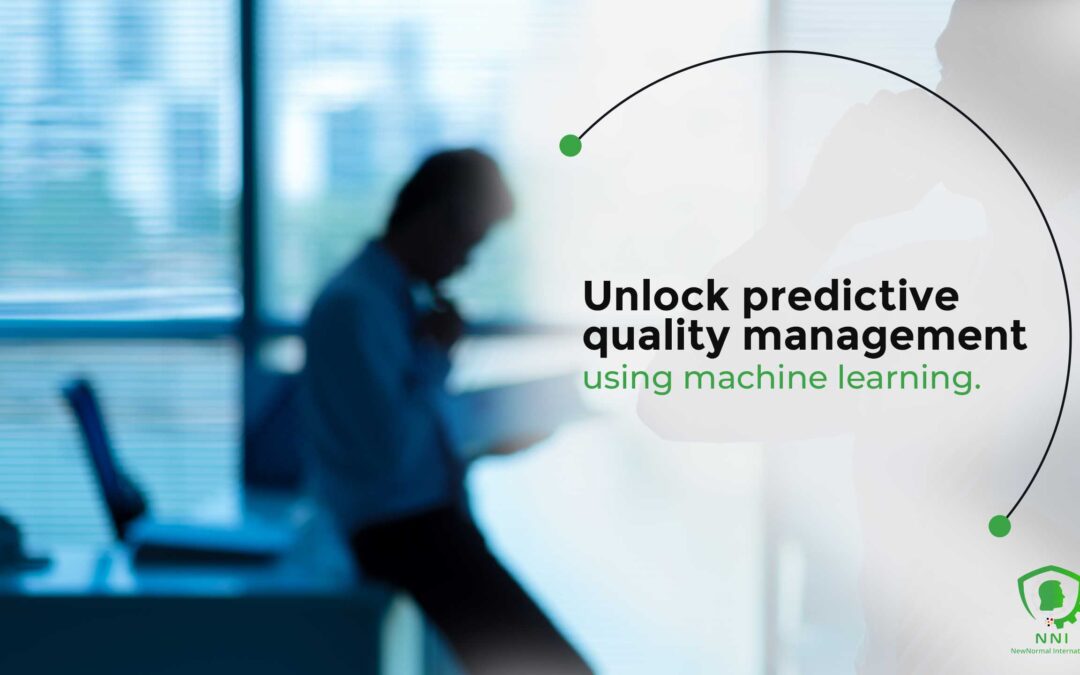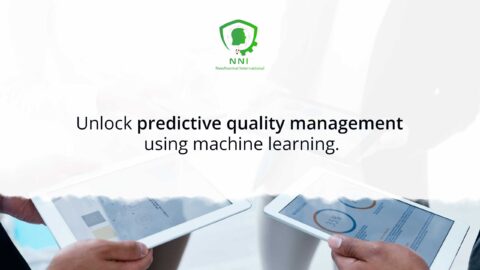Transforming Quality Control in the Age of AI
The Rise of Predictive Quality Management
In an era where precision and efficiency are paramount, Predictive Quality Management has emerged as a game-changer for industries striving to uphold the highest standards of quality.
Understanding Machine Learning’s Role in Quality Management
In the relentless pursuit of operational excellence, machine learning, a powerful subset of artificial intelligence, is revolutionizing the way businesses predict and manage quality, ushering in an era of proactive quality control. Unlike traditional quality control methods that rely on reactive measures, machine learning empowers businesses to anticipate and prevent quality issues before they occur, transforming quality control from a reactive process to a proactive discipline that drives continuous improvement and optimizes production processes.
At the heart of machine learning’s transformative power lies its ability to extract valuable insights from vast troves of production data, encompassing sensor readings, machine parameters, product specifications, and historical quality records. These insights, once hidden within the depths of unstructured data, are now illuminated through sophisticated machine learning algorithms that can identify patterns, correlations, and hidden relationships that would be difficult or impossible to detect through manual analysis.
By leveraging these data-driven insights, machine learning enables businesses to develop predictive models that forecast potential quality issues with remarkable accuracy. These predictive models, continuously refined and updated as new data becomes available, empower businesses to take preventive measures before defects arise, minimizing disruptions, reducing waste, and optimizing resource utilization.
The benefits of embracing machine learning for quality prediction and management extend far beyond mere defect prevention; they encompass a wide range of operational, strategic, and competitive advantages:
Reduced Defect Rates and Improved Quality: Machine learning-powered predictive analytics significantly reduces defect rates, leading to improved product quality, enhanced customer satisfaction, and a stronger brand reputation.
Proactive Quality Control and Reduced Costs: By anticipating quality issues before they occur, machine learning enables businesses to take proactive corrective actions, minimizing the need for rework, scrap, and costly recalls.
Optimized Production Processes and Increased Efficiency: Machine learning-driven insights inform process optimization initiatives, reducing production downtime, improving resource utilization, and enhancing overall operational efficiency.
Continuous Improvement and Innovation: Machine learning facilitates continuous learning and improvement, enabling businesses to refine their predictive models and quality control strategies as new data and insights emerge.
Competitive Advantage in Quality-Driven Markets: In markets where quality is a critical differentiator, machine learning-powered quality management provides businesses with a strategic advantage, enabling them to consistently deliver high-quality products and services that exceed customer expectations.
In essence, machine learning is not merely a technological innovation; it is a catalyst for quality transformation. By embracing machine learning, businesses can transform their quality control practices from reactive to proactive, driving continuous improvement, optimizing production processes, and achieving sustainable growth in the increasingly quality-conscious global marketplace.
Benefits of Machine Learning in Quality Assurance
The implementation of machine learning in quality management systems provides benefits like early defect detection, real-time data analysis, and predictive maintenance, leading to significant cost savings and enhanced product reliability.
Strategies for Effective Change Management
Incorporating machine learning into existing quality management frameworks requires effective change management strategies. This involves aligning organizational processes, technologies, and people with the new system.
Overcoming Implementation Challenges
The integration of machine learning into quality management can pose challenges like data privacy concerns, high implementation costs, and the need for specialized skills. Overcoming these barriers is crucial for successful adoption.
Executive Coaching for AI-Driven Quality Management
Executive coaching can play a pivotal role in equipping leaders with the necessary insights and strategies for implementing machine learning-based predictive quality management systems.
Leadership in the Age of AI
Leaders must possess a clear understanding of machine learning technologies and their impact on quality management to effectively guide their teams and drive organizational success.
Communicating the Benefits of AI in Quality Management
Effective communication is essential to ensure buy-in from all stakeholders for the transition to a machine learning-based predictive quality management system.
Strategies for Effective Communication
Developing clear, concise, and transparent communication strategies helps in conveying the benefits, processes, and expectations associated with the new system.
The Role of Generative AI in Quality Management
Generative AI can further enhance predictive quality management by creating simulations and models that can predict future outcomes based on historical data.
Embracing Next-Generation AI Solutions
By embracing generative AI, businesses can stay ahead of potential quality issues, ensuring a seamless, efficient, and predictive approach to quality management.
Conclusion
In conclusion, the integration of Machine Learning in Predictive Quality Management represents a significant advancement in quality assurance practices. By leveraging these technologies, businesses can not only anticipate but also prevent quality issues, ensuring product excellence and customer satisfaction.
#PredictiveQualityManagement, #MachineLearning, #AIinQualityControl, #InnovativeQualityAssurance











